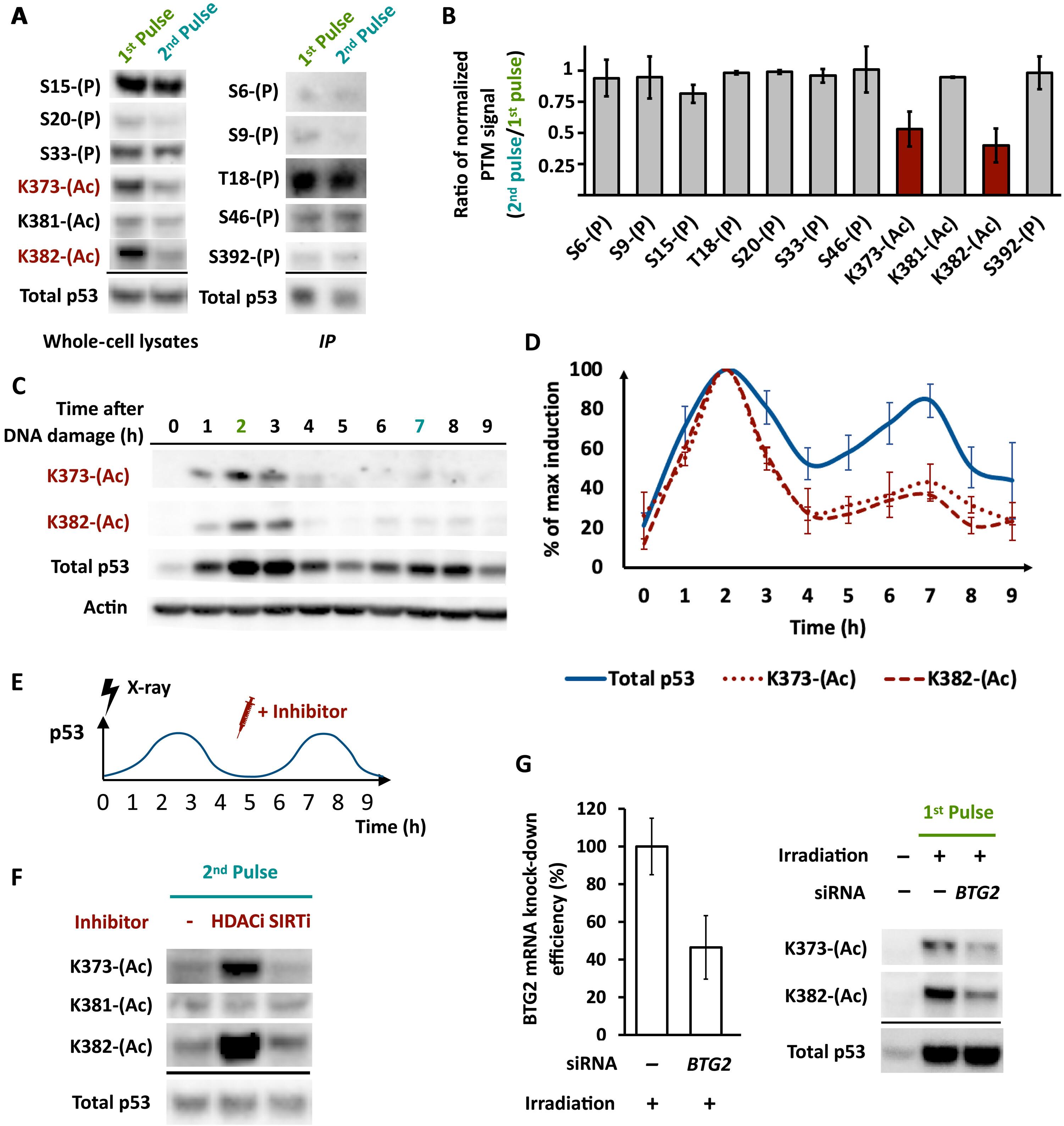Temporal regulation of gene expression through integration of p53 dynamics and modifications
IF 11.7
1区 综合性期刊
Q1 MULTIDISCIPLINARY SCIENCES
引用次数: 0
Abstract
The master regulator of the DNA damage response, the transcription factor p53, orchestrates multiple downstream responses and coordinates repair processes. In response to double-strand DNA breaks, p53 exhibits pulses of expression, but how it achieves temporal coordination of downstream responses remains unclear. Here, we show that p53’s posttranslational modification state is altered between its first and second pulses of expression. We show that acetylations at two sites, K373 and K382, were reduced in the second pulse, and these acetylations differentially affected p53 target genes, resulting in changes in gene expression programs over time. This interplay between dynamics and modification may offer a strategy for cellular hubs like p53 to temporally organize multiple processes in individual cells.

通过整合 p53 的动态和修饰对基因表达进行时间调控
DNA 损伤反应的主调节因子--转录因子 p53--协调多种下游反应并协调修复过程。在对双链 DNA 断裂做出反应时,p53 表现出脉冲式表达,但它是如何在时间上协调下游反应的仍不清楚。在这里,我们发现 p53 的翻译后修饰状态在其第一次和第二次表达脉冲之间发生了改变。我们发现,在第二个脉冲中,K373 和 K382 这两个位点的乙酰化减少了,这些乙酰化对 p53 靶基因产生了不同的影响,导致基因表达程序随时间发生变化。动态与修饰之间的这种相互作用可能为像 p53 这样的细胞枢纽提供了一种策略,可以在单个细胞中对多个过程进行时间组织。
本文章由计算机程序翻译,如有差异,请以英文原文为准。
求助全文
约1分钟内获得全文
求助全文
来源期刊

Science Advances
综合性期刊-综合性期刊
CiteScore
21.40
自引率
1.50%
发文量
1937
审稿时长
29 weeks
期刊介绍:
Science Advances, an open-access journal by AAAS, publishes impactful research in diverse scientific areas. It aims for fair, fast, and expert peer review, providing freely accessible research to readers. Led by distinguished scientists, the journal supports AAAS's mission by extending Science magazine's capacity to identify and promote significant advances. Evolving digital publishing technologies play a crucial role in advancing AAAS's global mission for science communication and benefitting humankind.
 求助内容:
求助内容: 应助结果提醒方式:
应助结果提醒方式:


